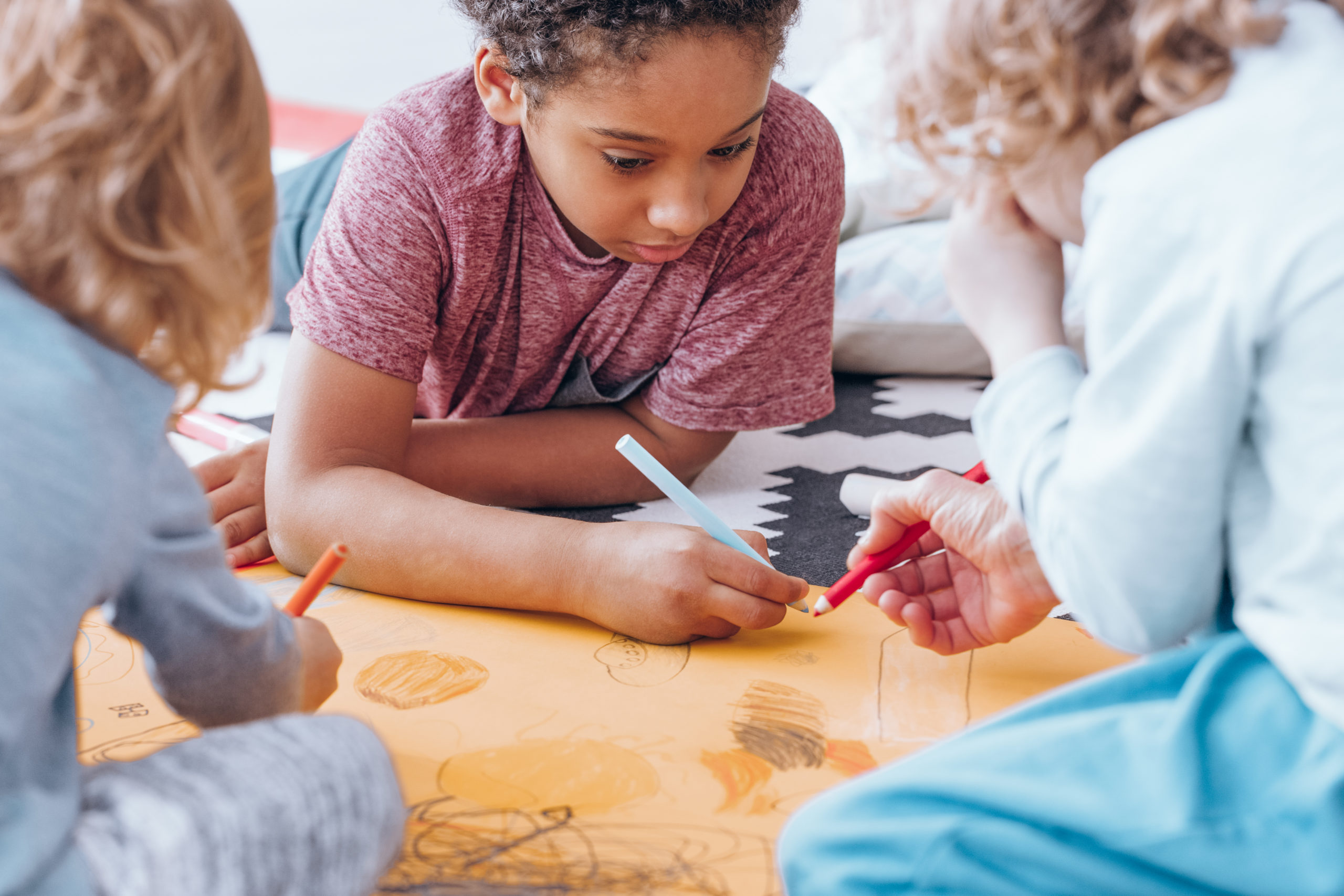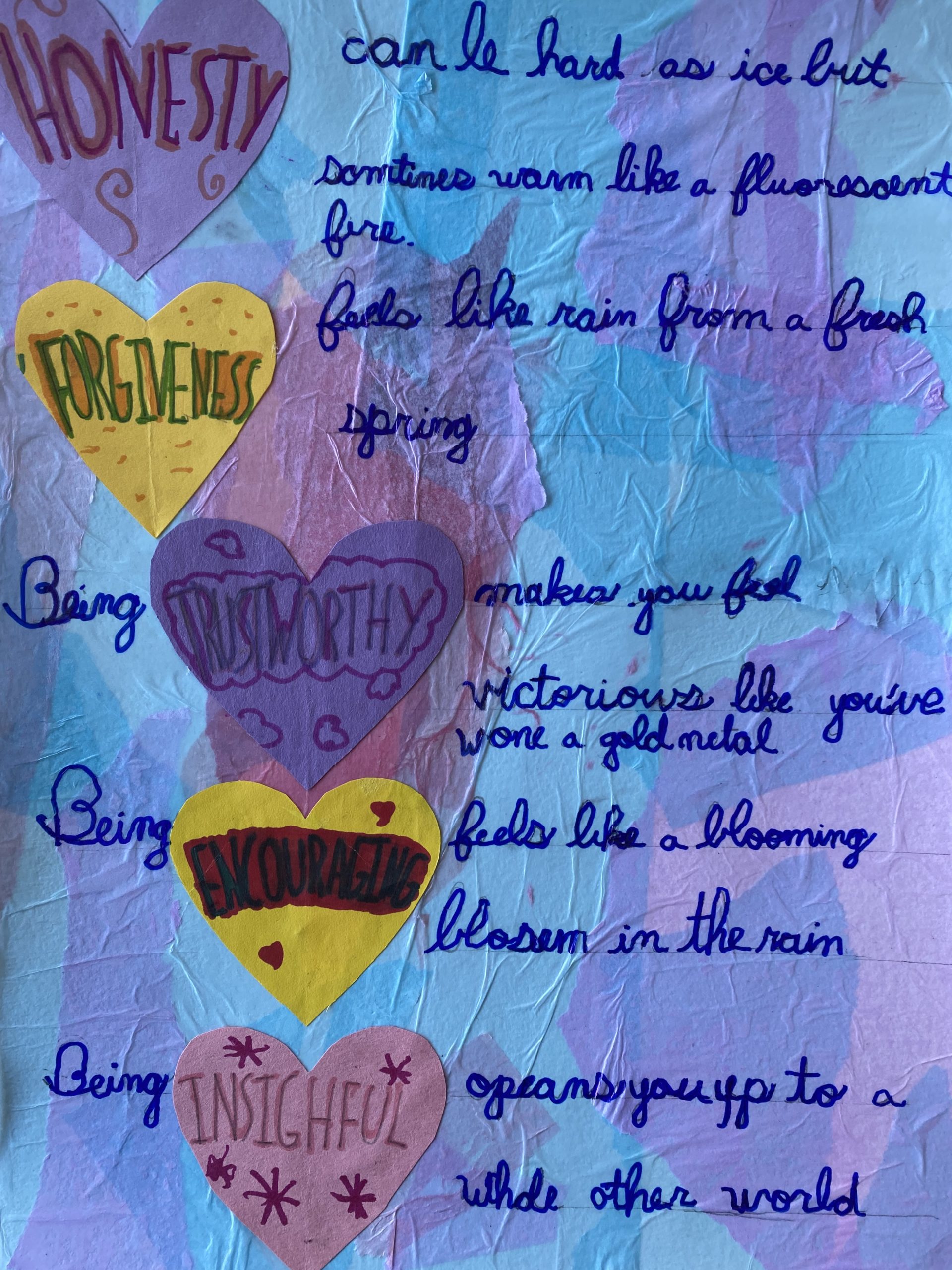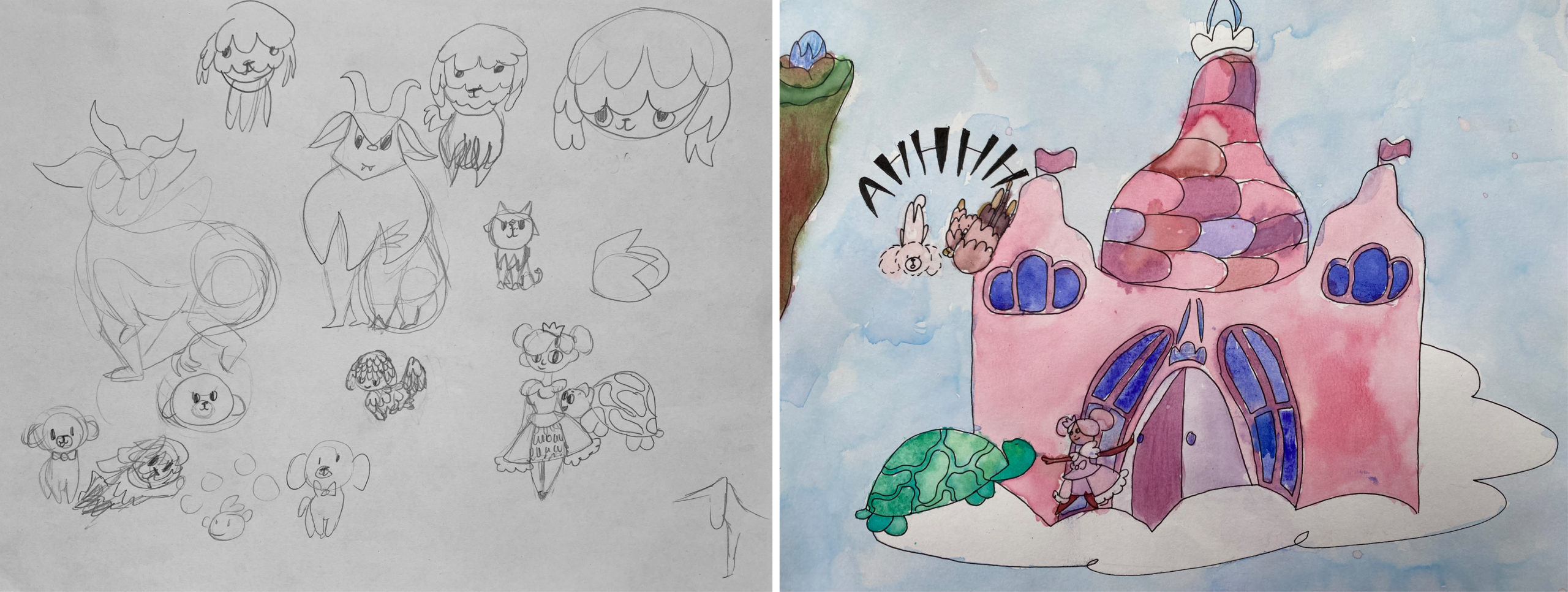A Visual Arts Teacher’s Experience with Project-Based Learning
Viewing art education not as a stand-alone program, but as an integral part of the curriculum.
By Marie-Hélène Bauguil, a Visual Arts Specialist for grades K-5 at Khan Lab School in Palo Alto, California.
I strongly believe that art is a subject that must be taught not only in a studio, where students can learn its visual language and techniques but in relation to other school subjects and life situations. Artists are observant, critical, and see connections between isolated events. The art they produce expresses how they understand the world around them and how they imagine it could be. My role as an art educator is to teach students to think like artists.

I work at Khan Lab School, a laboratory school which focuses on learner-centered teaching methods. Project Based Learning (PBL) is an important part of our program. PBL is a teaching approach in which students work collaboratively on projects that address real-world questions. They gain standards-based knowledge and skills through experimentation and extensive, rigorous research.
These projects are extremely successful for the students, who are deeply engaged throughout their durations (10 to 15 weeks). The experience is very gratifying for me, as well. I am an equal partner in the development and teaching of these projects, something that is still new and inspiring to me. I never had the feeling of being part of a team when I taught in public schools. I often designed integrated lessons, but they were not the result of collaboration. My “collaboration” with other teachers was limited to brief meetings in which they would tell me what topics were being covered in their classes, and it was left to me to integrate these topics into my lessons. While I appreciated the trust these teachers had in me, I also felt isolated.
By comparison, Khan Lab School has a strong collaborative culture. Art is not viewed as a stand-alone program, but as an integral part of the curriculum.
My participation in a PBL project begins with a preliminary meeting with all involved. My colleagues explain the curriculum and standards they will cover, the essential question, and ideas for the final product or products. A second meeting is scheduled during which we discuss my ideas and examples, and decide on a final art product. Throughout the execution of the project, we continue to meet regularly, often in an informal way, to communicate how the project is progressing, and what adjustments to the original plan may be needed.
I recently participated in two PBL projects, which you can read about below.
The Human Heart:

A finished artwork from the Heart Project
The subject of the first project was the human heart. It was a 4th-grade humanities, science, and visual arts collaboration. For this project, students investigated the question of what it means to have a good heart, physically and metaphorically.
In humanities, they read and analyzed two books (The Circulatory Story and Love That Dog), learned about literal and figurative language, and explored poetry.
In science, students ran a series of relay races to examine their impact on heart rates and learned about the function of the heart.
In art, they researched artists who use hearts in their work either as symbols or as elements of design, and practiced lettering and composing an image as they created multimedia artworks featuring poems expressing their personal values.
The Hero’s Journey:

Character portrait study and finished illustration from the Hero’s Journey Project

A 5th-grade student receiving feedback on her Hero Journey’s story from her 1st grader-partner
The topic of the second project was The Hero’s Journey. It was a 5th-grade humanities-visual arts collaboration. Over a period of 15 weeks, students gained a deep understanding of The Hero’s Journey cycle through case studies ranging from classic literature (The Ramayana and The Odyssey) to modern hero stories (Spider Man, Moana, and Harry Potter).
Using Design Thinking as a framework, they created illustrated stories that followed the Hero’s Journey cycle and targeted a specific audience (a class of 1st-graders).
In art, students explored visual narratives through a series of exercises and drew full-page illustrations to accompany their hero stories, planning and revising their pictures in the same way they revised and rewrote their story drafts. The last step was to create a printed book of their stories, for which they learned and practiced bookbinding techniques.
Both projects culminated in exhibitions during which students shared their learning and work processes with our school community.
The opportunity to collaborate with other teachers is one of the most exciting parts of my work and the reason I continue to love teaching. I find it energizing to design lessons that are driven by the essential questions and, at times, by the constraints of other academic subjects, rather than by my own choices. It forces me to think about my curriculum in new ways and to be more innovative in my practice. I have the profound satisfaction of knowing that what I do is the most effective way for my students to learn.

Marie-Hélène Bauguil
Marie-Hélène Bauguil is a visual artist and educator with 15 years of experience teaching fine arts to children and adults. She has designed and implemented large-scale arts programs in a variety of school settings and mentored teachers and volunteers in how to teach art. She has seven years of arts integration experience and co-taught an integrated humanities course for 5th graders. She holds a Master’s in Architecture and an Ed.D in Educational Leadership with a focus on Arts Education.
Marie-Hélène is a Visual Arts Specialist for grades K-5 at Khan Lab School in Palo Alto, California.
